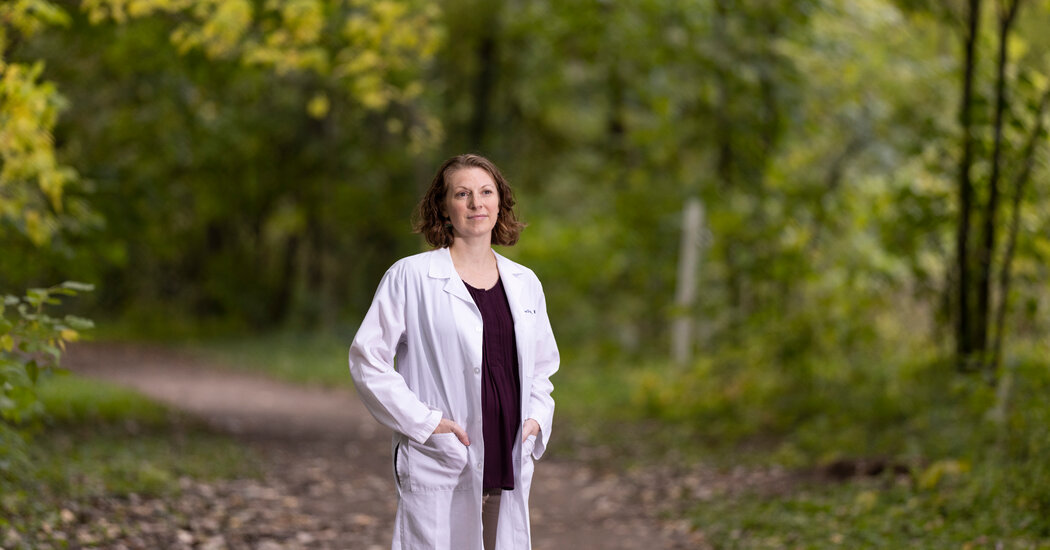[ad_1]
In the latest sign of growing frustration among professionals, doctors employed by a large nonprofit health care system in Minnesota and Wisconsin have voted to unionize.
The doctors, roughly 400 primary and urgent-care providers across more than 50 clinics operated by the Allina Health System, appear to be the largest group of unionized private-sector physicians in the United States. More than 150 nurse practitioners and physician assistants at the clinics were also eligible to vote and will be members of the union, which will be represented by a local of the Service Employees International Union.
The result was 325 to 200, with 24 other ballots challenged, according to a tally sheet from the National Labor Relations Board, which conducted the vote. Allina Health did not immediately comment.
The doctors complained that chronic understaffing was leading to burnout and compromising patient safety.
“In between patients, your doctor is dealing with prescription refills, phone calls and messages from patients, lab results,” said Dr. Cora Walsh, a family physician involved in the organizing campaign.
“At an adequately staffed clinic, you have enough support help take some of that workload,” Dr. Walsh added. “When staff levels fall, that work doesn’t go away.”
Dr. Walsh estimated that she and her colleagues often spend an hour or two each night handling “inbox load” and worried that the shortages were increasing backlogs and the risk of mistakes.
The union vote follows recent walkouts by pharmacists in the Kansas City area and elsewhere over similar concerns.
A variety of professionals, including architects and tech workers, have sought to form unions in recent years, while others, like nurses and teachers, have waged strikes and aggressive contract bargaining campaigns.
Some argue that employers have exploited their sense of mission to pay them less than their skills warrant, or to work them around the clock. Others contend that new business models or budget pressures are compromising their independence and interfering with their professional judgment.
Increasingly, doctors appear to be expressing both concerns.
“We feel like we’re not able to advocate for our patients,” said Dr. Matt Hoffman, another doctor involved in the organizing at Allina. Dr. Hoffman, referring to managers, added that “we’re not able to tell them what we need day to day.”
Consolidation in the health care industry over the past two decades appears to underlie much of the frustration among doctors, many of whom now work for large health care systems.
“When a physician ran his or her own practice, they made the decisions about the people and technology they surrounded themselves with,” Dr. Robert Wachter, chair of the department of medicine at the University of California, San Francisco, said in an email. “Now, these decisions are made by administrators.”
Doctors at Allina say that staffing was a concern before the pandemic, that Covid-19 pushed them to the brink and that staffing has never fully recovered to its prepandemic levels.
Relatively low pay for clinical assistants and lab personnel appears to have contributed to the staffing issues, as these workers left for other fields in a tight job market. In some cases, doctors and other clinicians within the Allina system have quit or scaled back their hours, citing so-called moral injury — a sense that they couldn’t perform their jobs in accordance with their values.
“We were promised that when we get through the acute phase of the pandemic, staffing would get better,” Dr. Walsh said. “But staffing never improved.”
Allina, which takes in billions in revenue but has faced financial pressures and recently eliminated hundreds of positions, did not respond to questions about the doctors’ concerns.
Joe Crane, the national organizing director for the Doctors Council of the S.E.I.U., which represents attending physicians, said that before the pandemic, he would receive about 50 inquiries a year from doctors interested in learning more about forming a union. He said he received more than 150 inquiries during the first month of the pandemic. (Mr. Crane was with another physicians’ union at the time.)
Mr. Crane, citing the siloed nature of the medical profession, said that unionization among attending physicians had nonetheless proceeded slowly, but that the victory at Allina could create momentum.
In March, more than 100 doctors voted to unionize at another Allina facility, a hospital with two locations. Dr. Alia Sharif, a physician involved in that union campaign, said doctors were under pressure there not to exceed length-of-stay guidelines for patients, even though many suffer from complex conditions that require more sustained care.
Allina is appealing the outcome of that vote to the National Labor Relations Board in Washington; a board official rejected an earlier appeal.
Even as rates of unionization have languished among attending physicians, they have increased substantially among medical residents. A sister union within the S.E.I.U., the Committee of Interns and Residents, has added thousands of members over the past few years.
Dr. Wachter said this could herald an increase in unionization among doctors outside training programs. “When these physicians finish training and enter practice, they are more comfortable with a world in which unionization doesn’t automatically conflict with their notions of being a professional,” he wrote.
[ad_2]
Source link

